What to do if my Panasonic KX-TG6643B handset does not ring?
- Ssarah66Aug 27, 2025
If the handset does not ring, check if the ringer volume is turned off and adjust it. Also, ensure that silent mode is not turned on; if it is, turn it off.
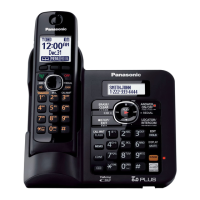
What to do if my Panasonic KX-TG6643B handset does not ring?
If the handset does not ring, check if the ringer volume is turned off and adjust it. Also, ensure that silent mode is not turned on; if it is, turn it off.
How to fix a Panasonic KX-TG6643B when it does not work?
If your unit is not working, ensure the batteries are installed correctly. Fully charge the batteries. Check all connections. Unplug the base unit’s AC adaptor to reset the unit, then reconnect it. If the handset has not been registered to the base unit, register the handset.
What to do if my Panasonic Answering Machine handset beeps and/or flashes?
If the handset beeps and/or flashes, it likely means the battery charge is low. Fully charge the batteries to resolve this issue.
| Brand | Panasonic |
|---|---|
| Model | KX-TG6643B |
| Category | Answering Machine |
| Language | English |
Details the different models available within the series and their included components.
Compares key features across different series, such as base unit display and speed dial capabilities.
Lists supplied accessories based on unit quantity and details additional/replacement accessory options.
Explains how to expand the phone system by registering optional handsets and their features.
Covers critical safety guidelines, operating precautions, medical considerations, and installation advice.
Basic safety precautions to reduce risks of fire, electric shock, and injury to persons.
Guidelines for optimal base unit placement, avoiding noise, and environmental considerations.
Instructions for cleaning and maintaining the product's exterior surfaces.
Includes notices on product disposal, privacy, and regional usage compliance.
Technical details of the unit, including standard, frequency range, power, and operating conditions.
Step-by-step guide for connecting the base unit, charger, and installing batteries.
Important notes regarding connections, battery installation, and charging procedures.
Explanation of battery level icons and their meanings.
Details the feature that reduces handset power consumption based on proximity to the base unit.
Identifies controls on the handset and base unit, including soft keys and navigator keys.
Details controls specific to the KX-TG6641 series and the function of the belt clip.
Explains items displayed on the handset and base unit screens.
Guide on performing initial settings like date, time, and language.
Defines symbols used in the manual and on the device.
Instructions for setting the current date and time on the unit.
How to change the display language and voice guidance language.
Setting the dialing mode (Tone or Pulse) for compatibility with telephone services.
Guides on making calls using the handset, speakerphone, and redial list.
Instructions for making calls using the base unit's speed dial keys.
How to answer incoming calls using the handset and the auto-talk feature.
Using the pause feature for PBX or long-distance service calls.
Adjusting handset and base unit ringer volumes, including temporary mute.
Explains call holding features and how to use them.
Using mute during calls and the flash function for PBX services.
Using Call Waiting and Call Waiting Caller ID services.
Switching to tone dialing and enhancing sound clarity.
Clarifies voice for easier understanding, with EQ indicator.
Joining calls and operating the unit during power failures.
Details battery operating times during power back-up mode.
Procedure for making calls when the main power is out.
Using the shared phonebook and answering calls during a power outage.
Introduction to the shared phonebook feature for making calls easily.
Steps for adding, erasing characters, and organizing phonebook entries by groups.
Changing group names and finding/calling entries by scrolling, character, or group.
How to find and edit existing entries in the shared phonebook.
Procedures for erasing single entries or all entries from the phonebook.
Using chain dial to dial stored sequences like calling card numbers.
Setting up, editing, and erasing speed dial entries.
Instructions on how to initiate calls using the speed dial keys.
Methods for customizing unit settings via menus or direct command codes.
Reference table for menu operations, codes for caller list, answering device, intercom, and date/time.
Customizing initial settings like ringer, Caller ID, handset name, call block, speed dial, and voice mail.
Configuring line mode, flash time, call sharing, and registration/deregistration.
Settings for power failure mode and changing display/voice languages.
Important notes and clarifications regarding various programming features and settings.
Setting up daily or once alarms with custom tones and times.
Setting silent mode to silence calls during specific periods.
Assigning custom names to handsets for easier identification during intercom calls.
Storing unwanted numbers and blocking calls without phone numbers.
Viewing, editing, and erasing numbers from the call block list.
Instructions for adding new handsets and removing registered units.
Overview of Caller ID compatibility and features, requiring subscription.
Details on displayed caller info, missed calls, and talking Caller ID.
Assigning ringers by group and accessing/viewing the caller list.
Editing phone numbers in the caller list before calling back.
Feature for automatically editing area codes and formats of called numbers.
Erasing selected or all caller information and storing it into the phonebook.
Introduction to the answering system, memory capacity, and turning it on/off.
Listening to callers leaving messages and adjusting speaker volume.
Recording custom greetings, using pre-recorded messages, and playing back greetings.
How to access and listen to recorded messages using the base unit.
Erasing all messages and operating the system during playback.
How to access and listen to recorded messages using the handset.
Calling back callers and recording voice memos.
Setting up remote access code and operations for remote control.
Using the system remotely, available commands, and voice guidance.
Procedure for remotely activating the answering system.
Configuring ring count, recording time, and selecting 'Greeting only' mode.
Information for subscribers using voice mail services instead of the unit's system.
Setting the message indicator to flash when new messages are recorded.
Explanation of voice mail services provided by service providers.
Saving and deleting the voice mail access number for automated dialing.
How the unit detects voice mail tones and when to turn this feature off.
Turning VM tone detection on/off and accessing voice mail messages.
Making and answering intercom calls between handsets and the base unit.
Using the locator function to find misplaced handsets.
Procedures for transferring calls and setting up conference calls.
Specific steps for call transfer/conference via handset and base unit.
How to answer a call that has been transferred from another unit.
Instructions for mounting the base unit on a wall.
Guidance on securely installing the charger unit, potentially on a wall.
Explanation of common display messages and their corresponding causes and solutions.
Solutions for common problems like handset not turning on or unit not working.
Resolving issues related to display language and handset registration.
Addressing battery recharge issues, call noise, and ring problems.
Resolving issues with Caller ID display, announcements, and automatic number editing.
Solutions for problems with message recording, system operation, and remote access.
Instructions for handling liquid damage and avoiding microwave drying.
Details on FCC compliance, registration, and connection requirements.
Information on FCC RF exposure limits, warnings, and hearing aid compatibility.
Contact information for product support, parts, and literature in the US and Puerto Rico.
Information on purchasing parts, accessories, and instruction books online.
Details of the one-year limited warranty for parts and labor in the US and Puerto Rico.
Procedure for sending the product for warranty repair, including packaging and required documentation.
Specifies what is covered and excluded by the limited warranty, and consumer rights.
Basic steps to take if the product is not working properly, including checking connections and batteries.
Recommendation to record serial number, purchase date, and dealer information for warranty service.
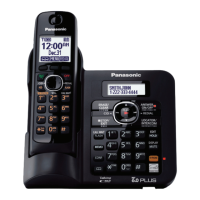

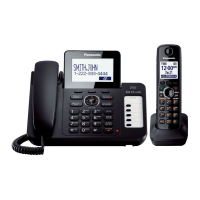
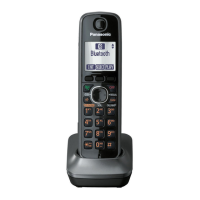

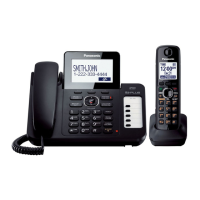
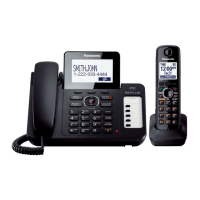

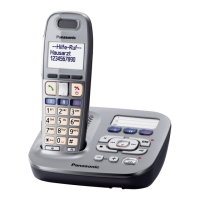
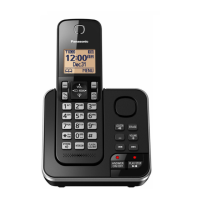

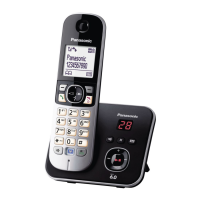
